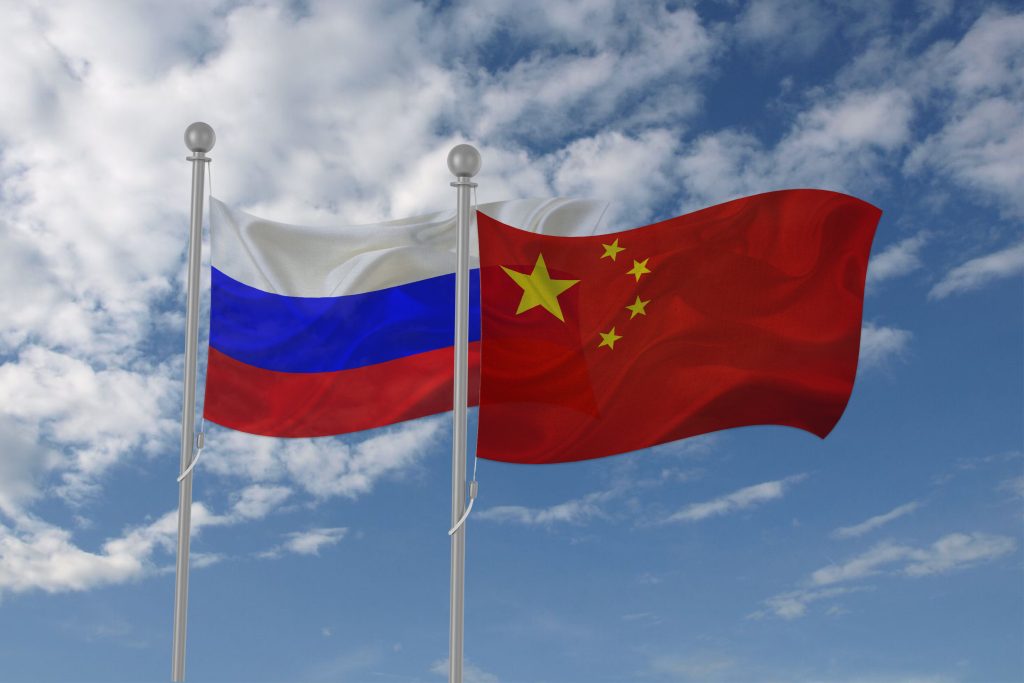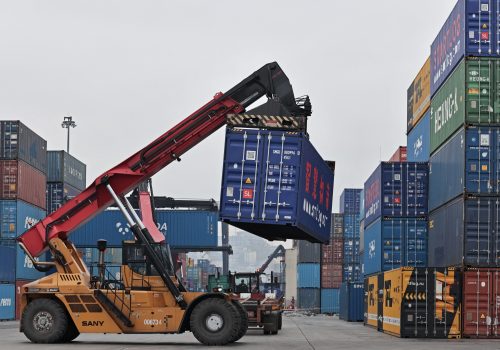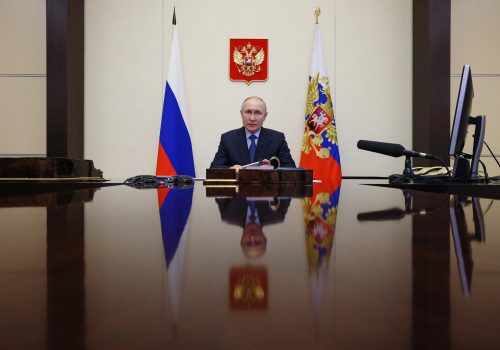China and Russia’s leaders have signaled a deepening strategic and economic partnership, but the reality hasn’t always matched the rhetoric. Following two high-level visits–Xi’s trip to Moscow in March and Russian Prime Minister Mikhail Mishutin’s trip to Beijing last month–both countries announced new trade, investment, and industrial production initiatives. But despite Xi and Putin’s public proclamation of a ‘no limits’ partnership, China and Russia’s economic ties are limited by Beijing’s strategic interests.
How are these growing economic ties impacting Moscow’s ability to withstand G7 sanctions and maintain its invasion of Ukraine—and where do Beijing’s interests diverge from Moscow’s?
Below we outline six trends that have defined the two countries’ relations since the invasion of Ukraine. Russia’s access to the yuan has bolstered its wartime economy. However, when it comes to trade and financial support, Beijing has been less accommodating.
Chinese yuan is Russia’s friendliest currency.
China is mitigating the impact of sanctions on Russia by providing Moscow an alternative currency for transactions. Chinese yuan supplanted the dollar as Russia’s most traded currency in early 2023. The switch came after the United States imposed sanctions on a few banks in Russia that were still allowed to make cross-border transactions in dollars. As the Group of Seven (G7) sanctions constrain Russian financial institutions’ ability to transact in the world’s leading reserve currencies, like dollars, euros, and yen, the yuan is arguably the only relatively stable, widely traded currency issued by a non-sanctioning authority that enables Russia to make international transactions.
Central bank currency swap lines play a major role in increasing the circulation of the yuan in the Russian economy. Although China’s capital controls make it difficult for foreigners to obtain yuan, Beijing has supported Russia’s growing yuan marketplace by backing currency swap facilities. Through these swaps, Russia and China’s central banks exchange rubles for yuan. Major Russian commercial banks then tap into their central bank’s accounts to introduce the yuan into the Russian economy. Furthermore, as China’s banks have accumulated Russian assets, they have also likely increased the amount of yuan in local circulation.
Russia’s linkages to the Chinese financial system also allow it to mobilize its currency reserves. G7 countries froze most Russian reserves held by sanctioning jurisdictions. However, Russia has been able to access its central bank reserves held in China (nearly 18 percent before the conflict), which are largely denominated in yuan. As a result, Russia has been able to use yuan-denominated reserves to conduct foreign exchange transactions to manage the value of the ruble. Moreover, Russia increased the permitted share of yuan in its National Welfare Fund up to 60 percent last year and plans on selling more yuan from the wealth fund to make up for the lost energy revenues and cover budget deficit.
Vital trade links
Russia has compensated for lost market share in the West by exporting more energy to China. Beijing has increased spending on Russian energy from $57 billion in the year prior to the invasion to $88 billion in the year after and allowed Moscow to make up for the lost revenues in the EU market. Russian crude oil exports to China could increase even further in 2023, as China’s state-run refiners have been increasing purchases of Russian oil, and Beijing has signaled that it may allow a further ramp-up. However, China maintains informal quotas on crude oil imports to limit exposure to any individual energy exporter. These sit at 15 percent of overall imports or around two million barrels a day per country. Another component of China’s energy imports from Russia is natural gas. Natural gas is more dependent on existing infrastructure and is thus harder to rapidly increase in imports. Russia is expected to deliver 22 billion cubic meters of natural gas to China through the Power of Siberia pipeline in 2023, eventually increasing to full capacity of 38 billion cubic meters in 2027. However, even though Russia has pushed for the construction of the Power of Siberia 2 pipeline, Beijing has shown hesitation and has, in fact, negotiated a new pipeline through Central Asia. Whether Russia keeps exporting more oil or natural gas to China will depend on Beijing’s decisions on quotas or new pipelines, making Russia asymmetrically dependent on its economic partnership with China.
Russia has imported electronic equipment from China to offset the effects of export controls but is struggling with obtaining advanced technology—even from Beijing. Integrated circuit imports from China have increased from $67 billion in 2021 to $170 billion in 2022, but most electronics exports from China to Russia are made up of basic computers and transport equipment. Notably, Beijing has banned the export of advanced Loongson microprocessors. The West’s imposition of export controls on advanced semiconductors against China in October 2022 signals that Beijing will become even more protective of advanced technology and less likely to transfer them to Russia.
China is not the only country whose trade with Russia has increased. Although Beijing has provided a lifeline to the Russian economy, countries such as India and Turkey have also expanded trade with Russia. In fact, India has become the second largest destination of Russian crude oil exports after China. Meanwhile, Central Asian and Caucasus countries’ exports of electronic equipment to Russia ballooned in 2022 and Serbia, Turkey, and Kazakhstan have provided semiconductors to Russia throughout the last year. China might be the largest economy supporting Russia but other countries’ trade relations with Russia should be as closely monitored as Beijing’s.
Limits in the ‘no-limits’ partnership
China has generally avoided steps that could trigger secondary sanctions or that greatly increase its own strategic dependence or risk exposure to Russia. For example, Chinese banks have not become creditors to the Russian government. Likewise, China has hedged against dependence on Russian energy imports and has restricted the flow of advanced technology to Russia. The notion of a “no limits” partnership remains rhetorical for now.
Maia Nikoladze is the assistant director at the Economic Statecraft Initiative within the Atlantic Council’s GeoEconomics Center. Follow her at @Mai_Nikoladze.
Phillip Meng is a young global professional at the Atlantic Council’s GeoEconomics Center.
Jessie Yin is a young global professional at the Atlantic Council’s GeoEconomics Center.

At the intersection of economics, finance, and foreign policy, the GeoEconomics Center is a translation hub with the goal of helping shape a better global economic future.
Further reading
Tue, May 30, 2023
China is trading more with Russia—but so are many US allies and partners
New Atlanticist By Josh Lipsky, Niels Graham
A number of countries have increased their trade with Russia since its full-scale invasion of Ukraine in early 2022, including non-aligned countries and even some EU members.
Thu, May 25, 2023
Global Sanctions Dashboard: US and G7 allies target Russia’s evasion and procurement networks
Econographics By
Tackling export controls circumvention by Russia; the enforcement and effectiveness of the oil price cap; the failure of the US sanctions policy towards Sudan, and how to fix it.
Wed, May 24, 2023
Russia’s ‘data glasnost’ didn’t last long. Here’s how to tell whether sanctions are working.
New Atlanticist By Charles Lichfield
Economic data is still coming out of Russia, and Russian Central Bank Governor Elvira Nabiullina and other financial elites have been pushing for making even more data available. But that's changing.
Image: National flag waving in the blue sky with wind



